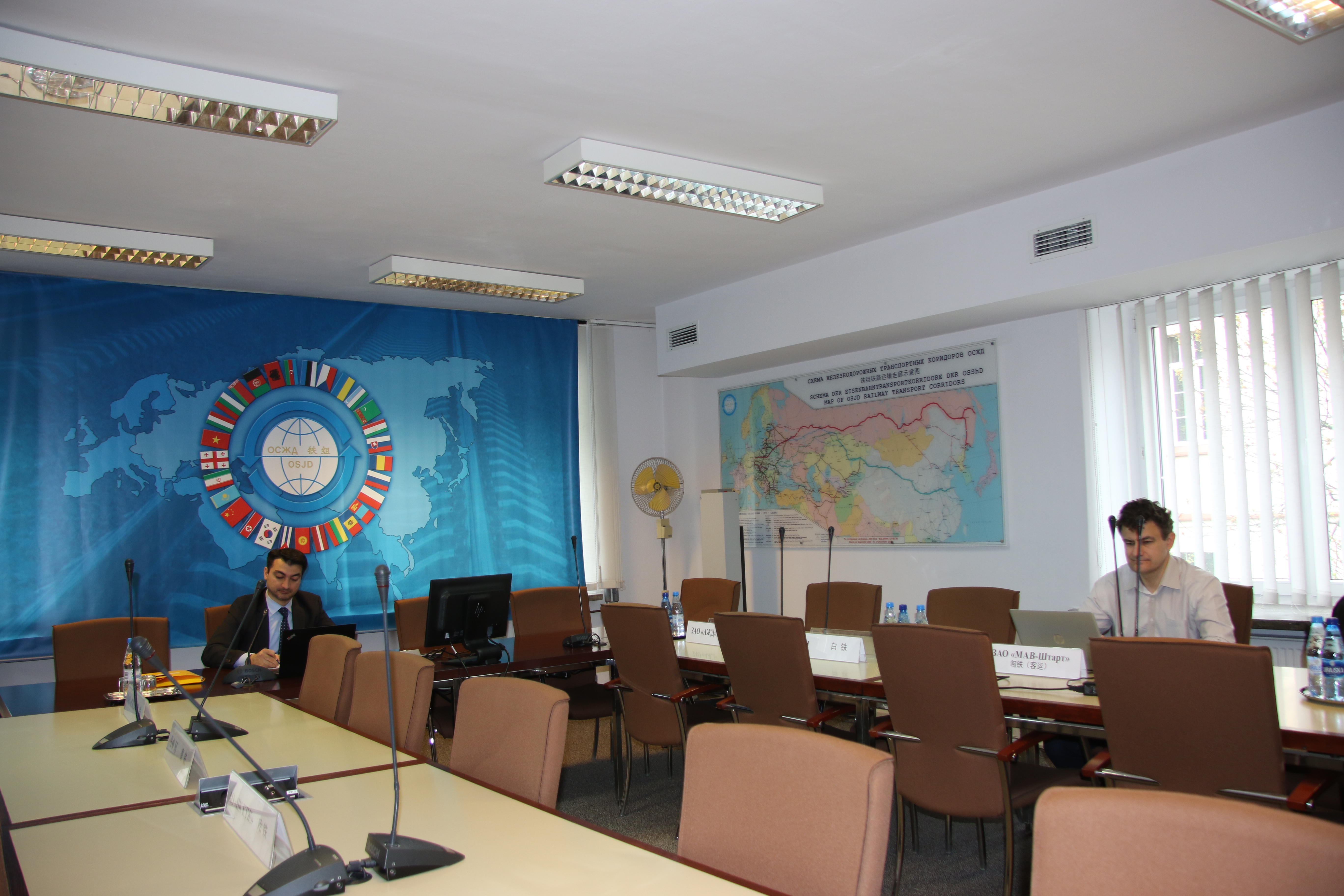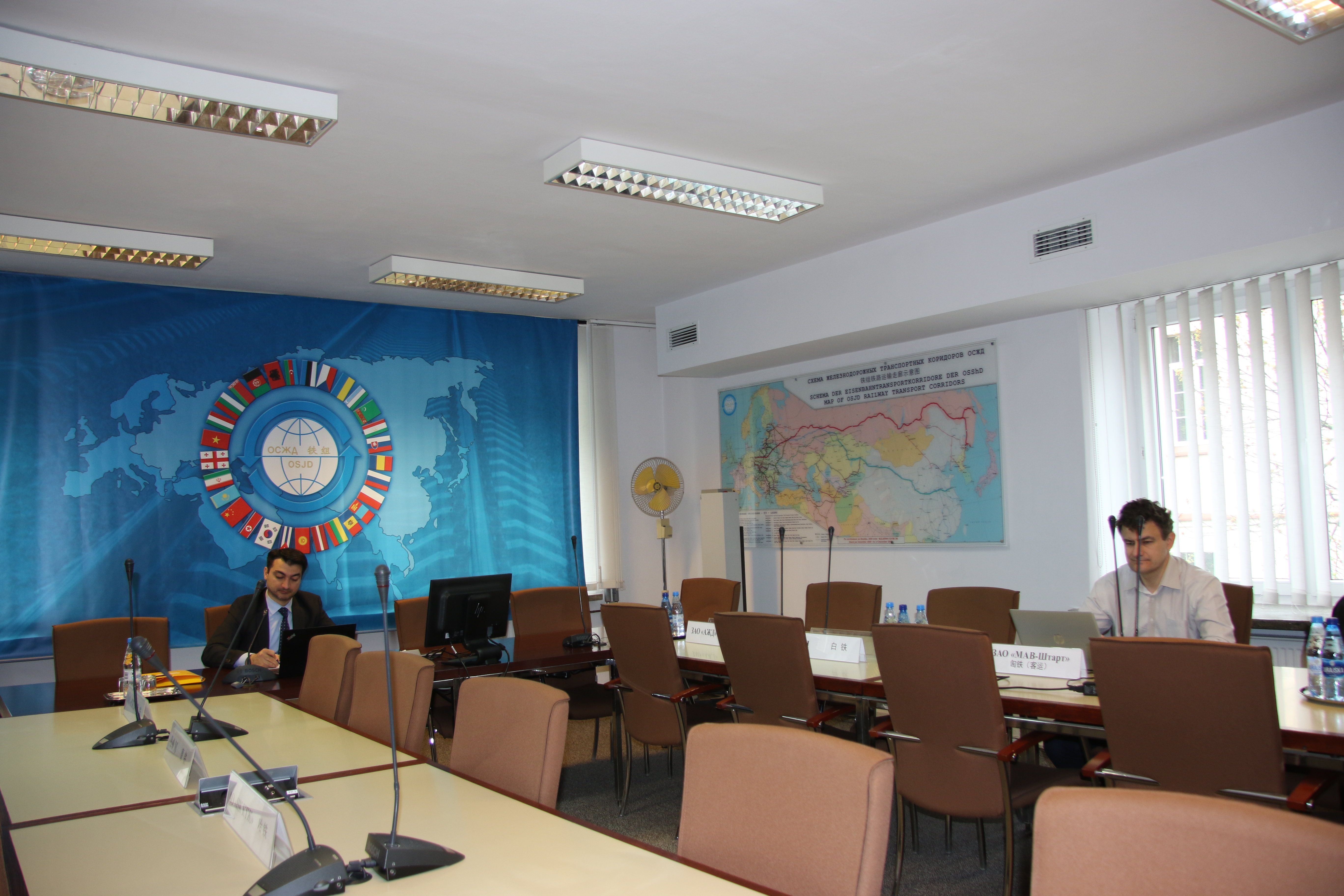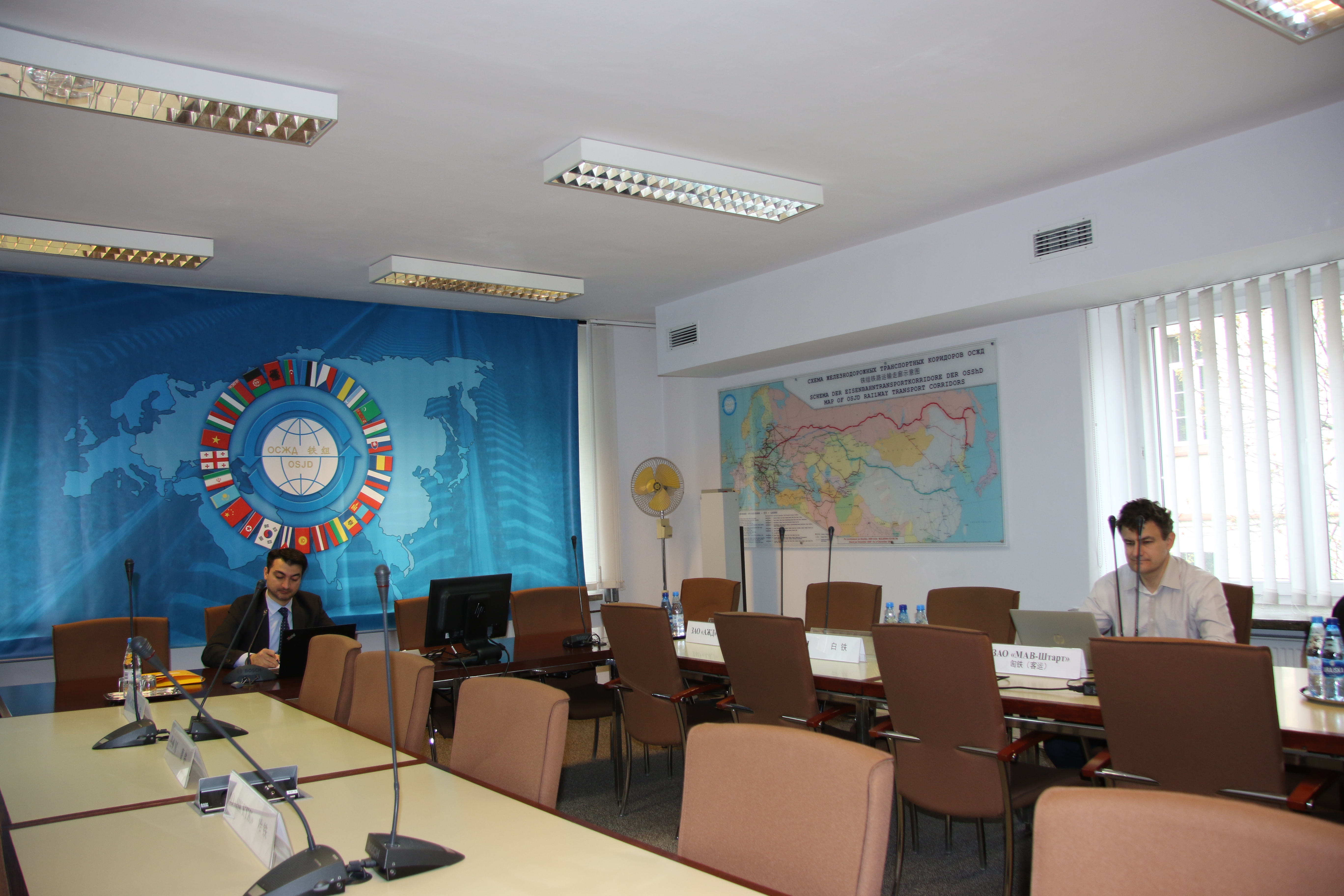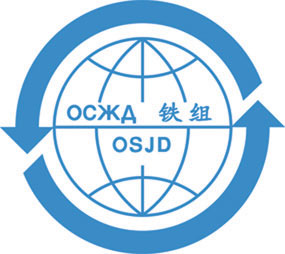Expert meeting of the OSJD Commission on Infrastructure and Rolling Stock on the sub-topic “Locomotives”



The expert meeting of the OSJD Commission on Infrastructure and Rolling Stock on sub-topic 5.1 “Locomotives” of subject No. 5 “Rolling stock for railways. Technical requirements as to its elements” was held at the OSJD Committee (Warsaw) on 25-27 April 2023 with the participation of the representatives of the following OSJD railways: AZD CJSC, BC, MAV Co. (MÁV-Start Co.), “KTZ NC” JSC, CFM, RZD OJSC; OSJD affiliated enterprises – RUT (MIIT) and the Southwest Jiaotong University, as well as the OSJD Committee.
Opening the meeting, Secretary of the OSJD Committee Attila Kiss informed the participants on the decisions taken by meeting XXXVII of the Conference of General Directors (12-14 and 19 April 2023, Warsaw) and noted the relevance and the importance of the discussions on this subject for ensuring interoperability in international railway traffic, as well as expressed his gratitude to all the delegations for their participation.
Chairman of the OSJD Commission on Infrastructure and Rolling Stock Radovan Vopalecky informed the meeting participants on the activities carried out within the Commission and on the tasks that it will be faced with in the future.
The meeting agenda included the following items:
- consideration of the draft OSJD Leaflet “Recommendations for the development of technical regulations for identifying the requirements for new passenger rolling stock (electric trains) without atmospheric pollutant emissions (an edition for the European railways of 1435-mm track gauge)” (leading duty holder – MAV Start Co., duty holders AZD CJSC, BC, “KTZ NC” JSC, CFM, PKP, RZD OJSC, UZ);
- updating OSJD Leaflet R 688 “Recommendations for the rational organisation of the use of diagnostics of locomotives in their technical maintenance system” (edition II as of 06.11.2008) (leading duty holder – RZD OJSC, duty holders – BC, AZD CJSC);
- a presentation to be delivered by the AZD CJSC on the subject “Modern locomotive depots” and a presentation by the Southwest Jiaotong University on the subject “Testing of dynamic characteristics during the continuous operation of high-speed electric trains”;
- finalisation of the draft Work Plan of experts on sub-topic 5.1 “Locomotives” of subject No. 5 “Rolling stock for railways. Technical requirements as to its elements” for 2024;
- some other issues.
The MÁV-Start Co. representative briefed the meeting participants on the draft OSJD Leaflet “Recommendations for the development of technical regulations for identifying the requirements for new passenger rolling stock (electric trains) without atmospheric pollutant emissions (an edition for the European railways of 1435-mm track gauge)”, which stipulates the basic requirements and operating conditions for a new passenger electric rolling stock for the European railways of 1435-mm track gauge.
The submitted material included information on the basic requirements and operating conditions, the main technical data of the new passenger rolling stock, and it was noted that the operation of a hybrid electric train powered by the traction batteries should be provided both in terms of the overhead catenary system of the European mainline railways with a nominal voltage of 25 kV 50 Hz, 15 kV 16 2/3 Hz AC or 3000 V DC and non-electrified railway lines when battery powered.
The rolling stock must not be subject to mechanical or electrical damage in the event of the wrong lifting of the pantograph on the electrified railway lines which differ from the systems 25 kV 50 Hz, 15 kV 16 2/3 Hz AC and/ or 3000 V DC. When powered by a traction battery, regardless of the features of the route (for example, the degree and length of the rise), it is required to ensure a cruising range of at least 80 km at a maximum speed of 120 km/h with full auxiliary load (air conditioning, heating, lighting, etc.), with due account for the maximum number of passengers and the weight of the electric train. It is also required to ensure that the batteries installed in the electric train can be charged from the current collector (25 kV 50 Hz or 15 kV 16 2/3 Hz AC and/or 3000 V DC) in both stationary and moving electric trains for no more than 45 minutes to cover a distance of at least 80 kilometres.
The hydrogen fuel cell power supply system installed in a multiple-unit train must provide a cruising range in accordance with the operating model of the electric train at a permitted maximum design speed of the electric train that is moving with full auxiliary load (air conditioning, heating, lighting, etc.) and with due account for the maximum number of passengers and weight of the multiple-unit train. The service life of the power supply system on fuel cells must be at least 50 % of the planned full service life of the entire electric train. It is needed to ensure that damage to the rolling stock as a result of an accident, damage (vandalism) or for any other reason does not lead to a short circuit and fire of the electric train if traction batteries or hydrogen fuel cells are damaged, and it is also necessary to prevent any leakage of hydrogen and inflammation of the electric train if the hydrogen fuel tanks are damaged.
It should be possible for the train driver and/or maintenance personnel and emergency service to safely switch off the full power supply of rolling stock by means of shutdown of hydrogen supply for the fuel cells.
The meeting has agreed on the issue of spreading the effect of these technical recommendations onto the electric trains of 1520-mm track gauge with the addition of requirements for ensuring electromagnetic compatibility, fire safety, explosion safety and functional performance with due account for the climatic factors, as well as renaming the Leaflet as “Recommendations for the development of technical requirements to new passenger rolling stock (electric trains) without atmospheric pollutant emissions (an edition for the railways of 1435-mm and 1520-mm track gauge)”.
The meeting participants also got familiarised with the first version of the draft edition III of the OSJD Leaflet R 688 “Recommendations for the rational organisation of the use of diagnostics of locomotives in their technical maintenance system”, updated by the leading duty holder – Russian Railways OJSC. It was noted that the existing methods for defining the frequency and volume of scheduled preventive repairs of locomotives need to be further improved in terms of more careful consideration of the actual technical condition of the locomotive equipment. Therefore, the task of maintenance and repair of locomotives should include not only the restoration of failed components and assemblies, but also the maximum prevention of failures.
The development of microprocessor systems, computer vision, artificial intelligence in conjunction with a variety of parameter control devices (actuating devices and sensors) makes it possible to engage diagnostics in a wider range of units and elements of rolling stock. Operational wireless transmission of data regarding the state of components of rolling stock to the technical maintenance and diagnostics points allows us not only to create an effective repair system but also to predict the reaching of the pre-failure state of a locomotive along the route.
The implementation of diagnostic systems with a predictive analysis of the technical condition of traction rolling stock is a priority objective for the development of this aspect. For the period of achieving the objective, it is advisable to introduce a variable maintenance and repair system based on a set of calculated predictive data and actual parameters obtained as a result of the planned full-scale diagnostics of certain assembly units.
A new approach to construction of the maintenance and repair system envisages the withdrawal of a locomotive from the service rolling stock, depending on the valid actual state of its equipment. This is a planned system, since the work amount of repairs is calculated in advance, whereby various restoration operations are grouped so that the total cost of restoring and maintaining the serviceable condition of the locomotive could be minimised.
In view of the proposals received at the meeting, the experts agreed to continue their work and hold an additional meeting in October 2023 (tentatively 2-6 October) in order to finalise those draft Leaflets.
The meeting participants got familiarised with the information material on the subject “Modern locomotive depots” presented by the Azerbaijani Railways CJSC. The presentation “Balajary Locomotive Depot” provided information regarding the equipment used for the locomotive wheel profiling, the pressing and pressing-off of wheel sets, shunting operations with a loco-tractor, a device for charging and discharging batteries, as well as the sand supply system, an inspecting station for trailers and axles of wheel sets.
In the presentation of the Southwest Jiaotong University (PRC) on the subject “Testing of dynamic characteristics during the continuous operation of high-speed electric trains”, the information was presented on the problems with dynamics during the long-term operation, methods for studying dynamic characteristics, monitoring and controlling the wheel-rail interaction.
The expert meeting has considered and agreed the draft Work Plan on the sub-topic “Locomotives” for 2024 and addressed the annual meeting of the OSJD Commission on Infrastructure and Rolling Stock with a request to deliberate it in November 2023 at the annual meeting of the Commission.
The meeting participants were also informed about the proposals of Russian Railways JSC to improve the work of the OSJD Commission on Infrastructure and Rolling Stock in the following aspects:
- creation of an up-to-date railway digital system of radio communications using the communication network standards of at least the fourth and fifth generations (4G/LTE and 5G);
- automation and robotisation of the infrastructure maintenance process using artificial intelligence technologies and digital modelling tools/digital twins;
- digital automatic coupling.
